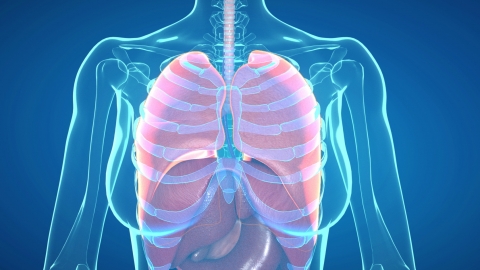What are the symptoms of white lung?
Generally, symptoms of white lung may include difficulty breathing, cough, fever, chest pain, fatigue, etc. If any abnormalities occur, it is recommended to seek medical attention promptly. Detailed analysis is as follows:

1. Difficulty Breathing
White lung typically indicates extensive lung lesions, leading to severely impaired gas exchange function. Oxygen has difficulty entering the bloodstream, and carbon dioxide is also difficult to expel, causing breathing difficulties. Patients may feel labored breathing and shortness of breath, with significant difficulty in breathing even at rest, and the severity may gradually worsen.
2. Cough
Lesions in the lungs stimulate respiratory tract receptors, triggering a cough reflex. Coughing is a physiological response by which the body attempts to clear foreign substances, phlegm, or inflammatory materials from the airways. Patients may experience persistent dry cough or cough up small amounts of white or yellow phlegm. The frequency and severity of coughing may vary depending on individual differences and disease progression.
3. Fever
Most cases of white lung are caused by infections, and the body's immune system responds by releasing pyrogenic substances, causing the thermoregulatory center's set point to shift upward, thus resulting in fever. Patients typically develop fever symptoms, with body temperature possibly rising to 39°C or higher, accompanied by facial flushing, nausea, vomiting, and other discomforts.
4. Chest Pain
Lung lesions may involve the pleura, causing pleuritic pain. Additionally, difficulty breathing and coughing may lead to chest muscle tension or strain, thereby exacerbating chest pain. Some patients may experience chest pain of varying severity, which can be dull, aching, or sharp, and the pain sometimes intensifies with breathing or coughing.
5. Fatigue
Due to increased energy consumption and the effects of symptoms such as difficulty breathing, patients experience significant fatigue and tiredness. At the same time, oxygen deficiency affects cellular energy metabolism, further exacerbating the symptoms of fatigue. Patients exhibit marked fatigue and exhaustion, with decreased exercise tolerance, and even mild activities can cause extreme tiredness.
Patients with white lung can undergo chest physical therapy, such as postural drainage, chest percussion, and vibration-assisted expectoration, to help loosen and clear respiratory secretions, improve ventilation function, and alleviate the patient's symptoms of difficulty breathing.





